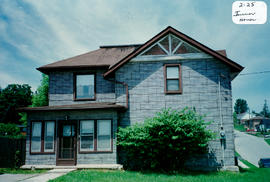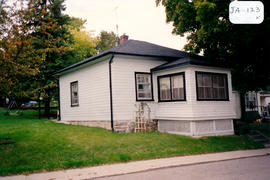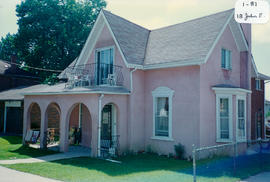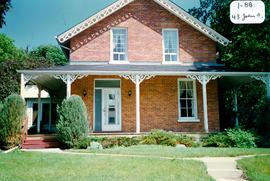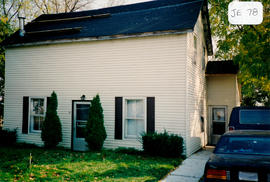185 Holland Street West - The Turner House
- CA BWGPL GJ-HB-2017-04-01-09
- Item
- 1996
Part of George Jackson fonds
The Turner House is located at 185 Holland Street West (on the northwest corner of Holland and Toronto Streets). It was built in the 1880’s in the Eclectic Gothic Revival style. The two-storey, ‘L’-shaped building has an asymmetrical façade. The gable roofs above the front façade projection and at the centre of the façade facing Toronto Street are Gothic Revival features. A medium-pitched, hipped main roof with curb detail and wide eaves are Italianate features. The entrance is from an enclosed, asymmetrical porch with a shallow-pitched roof. The porch may originally have been open. Double-hung windows (of various sizes) are set into rectangular openings with plain, wood frames and sills. Painted, wood half-timbers decorate the front and side façades below the gables. There is a discontinuous eaves line, post and beam construction, and a parged, stone foundation. The stucco cladding has been replaced with insulbrick siding. According to the 2000 inventory, some original wood siding is visible below the gables. It also notes that other than the form and some details, there are few original features. (1, 3)
George Jackson

